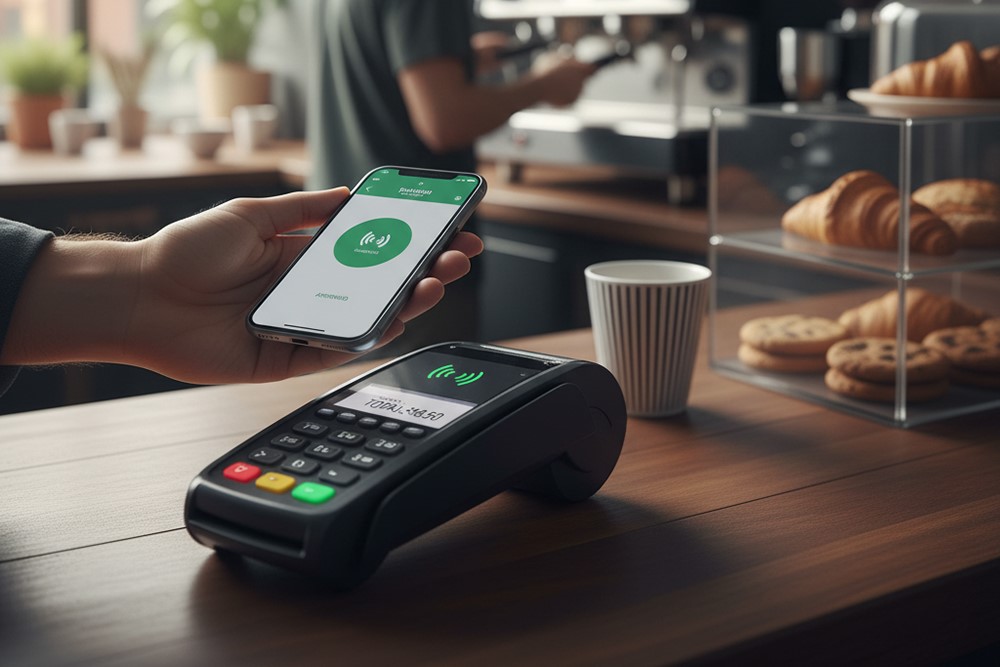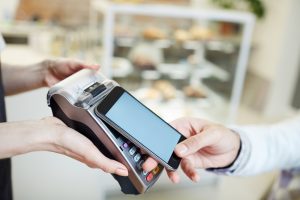The way Canadians pay for goods and services has evolved rapidly over the past decade. What was once a novelty has now become a mainstream expectation: contactless payments in Canada. With customers demanding speed, security, and convenience at the checkout, businesses can no longer afford to ignore this shift.
From tap to pay credit and debit cards to digital wallets, Canada and advanced NFC payments, consumers are embracing cashless transactions at record levels. In this article, we’ll explore why contactless payments have become essential for Canadian businesses, the technology behind them, and how organizations can adapt to thrive in this new payment environment.
The Rise of Contactless Payments in Canada
Canada is one of the world leaders in adopting contactless payment technology. According to financial industry reports, more than three-quarters of all in-person card transactions are now completed with a tap. This trend accelerated during the pandemic, when consumers prioritized hygienic, touch-free transactions, but it has continued to grow even after restrictions lifted.
Businesses that don’t accept contactless risk alienating a large share of their customers. From small cafés to national retailers, contactless payments Canada are becoming the default method at checkout.
What Are Contactless Payments?
Contactless transactions allow consumers to pay by simply tapping a card, phone, or wearable device on a payment terminal. The technology behind this innovation is Near Field Communication (NFC).
-
Tap to pay: A quick wave or tap of a card or device processes the payment instantly.
-
NFC payments: The secure wireless communication between the card/device and the payment terminal ensures speed and protection.
-
Digital wallets Canada: Services like Apple Pay, Google Wallet, and Samsung Pay store encrypted card information, allowing Canadians to pay with their smartphones or smartwatches.
This combination of speed, security, and simplicity is what makes contactless the preferred choice for many Canadians.
Why Businesses Must Adapt
1. Consumer Demand for Speed and Convenience
Modern customers expect fast, seamless checkouts. With tap to pay, transactions are processed within seconds, minimizing lines and improving the overall shopping experience. Businesses that fail to meet this expectation risk losing repeat customers.
2. Health and Hygiene
During the COVID-19 pandemic, many Canadians shifted to touch-free payments for safety reasons. Even today, many still prefer avoiding physical cash and PIN pads. By supporting contactless payments Canada, businesses meet this hygiene-conscious demand.
3. Competitive Advantage
Accepting NFC payments and digital wallets Canada signals to customers that your business is modern, trustworthy, and tech-savvy. It helps differentiate you from competitors who may not yet accept contactless methods.
4. Improved Transaction Security
Contrary to some myths, contactless payments are highly secure. Transactions are protected by encryption, tokenization, and fraud monitoring systems. For businesses, this reduces liability and builds consumer trust.
How Contactless Technology Works
Contactless payments are powered by NFC, a short-range wireless technology. When a customer taps their card or device near a reader, data is securely transmitted to process the payment.
-
Cards: Contactless-enabled credit and debit cards use embedded chips that communicate with terminals.
-
Phones/Smartwatches: Digital wallets Canada use tokenization, replacing sensitive card numbers with a secure digital identifier.
-
Terminals: Businesses need updated POS (point-of-sale) systems capable of accepting NFC-enabled transactions.
For both merchants and consumers, the process is nearly instantaneous—no swiping, inserting, or entering PINs for purchases under the transaction limit.
Benefits for Businesses
1. Faster Checkout Times
Shorter transaction times mean less waiting for customers and higher efficiency for staff. Restaurants, retailers, and service providers all benefit.
2. Higher Customer Satisfaction
The convenience of tap-to-pay encourages repeat visits. Customers are more likely to return to businesses offering modern payment options.
3. Increased Sales
Studies show that when payments are easier, customers are more likely to spend slightly more. The frictionless process makes transactions feel effortless.
4. Reduced Cash Handling
Less reliance on physical cash reduces the costs of handling, depositing, and securing money. It also lowers the risk of theft or error.
5. Future-Proofing
As contactless payments continue to grow, adopting them now ensures your business is prepared for evolving consumer preferences.
Adapting to Contactless Payments
Transitioning to contactless doesn’t have to be complicated. Here are the key steps businesses in Canada should take:
Upgrade Your POS System
Ensure your payment terminals support NFC payments. Most modern POS providers in Canada already offer this functionality, but older systems may need upgrading.
Train Staff
Employees should understand how contactless works so they can guide customers. Training also prevents errors and ensures smoother checkouts.
Promote Your Contactless Capabilities
Let customers know you accept digital wallets Canada and tap-enabled cards. Display signs at your checkout and mention it in marketing materials.
Review Security Measures
Work with your payment provider to ensure strong encryption, fraud detection, and compliance with PCI DSS (Payment Card Industry Data Security Standards).
Contactless Payments Across Industries
Retail: Faster lines and improved customer satisfaction make contactless ideal for shops.
Restaurants: Speeds up payments at busy times and integrates well with tableside ordering systems.
Transportation: Public transit systems in Canada are increasingly adopting tap-to-pay solutions for speed and convenience.
Healthcare: Clinics and dental offices use contactless to streamline checkouts while focusing on patient care.
The adaptability of contactless payments in Canada makes them suitable for businesses of every size and sector.
The Future of Contactless in Canada
The use of tap technology is only expected to grow. Experts predict even higher adoption rates as Canadians become more comfortable with digital wallets Canada and wearable tech. Beyond payments, NFC could also be used for loyalty programs, digital receipts, and identification services.
For businesses, the message is clear: adopting contactless isn’t just about keeping up with trends—it’s about preparing for the future of commerce.
Conclusion
Contactless payments are no longer optional—they are a necessity. With the rise of contactless payments Canada, businesses that fail to adapt risk losing customers, slowing operations, and falling behind competitors. By embracing tap to pay, NFC payments, and digital wallets Canada, companies can provide safer, faster, and more satisfying experiences for their customers. In a country that leads the world in payment innovation, staying current with consumer preferences is one of the smartest business decisions you can make.
FAQ’s
Q1. How popular are contactless payments in Canada?
A: Extremely popular—Canada ranks among the top adopters globally. Over three-quarters of all in-person transactions are now completed with contactless methods, making it the preferred choice for many Canadians.
Q2. Are contactless payments safe for businesses?
A: Yes. Contactless payments use encryption and tokenization to protect sensitive data. They are often more secure than cash transactions, reducing fraud risks for both consumers and businesses.
Q3. What percentage of Canadians use tap to pay?
A: Recent studies show that more than 75% of Canadians regularly use tap to pay methods, and the number continues to rise as more merchants adopt NFC-enabled payment systems.




